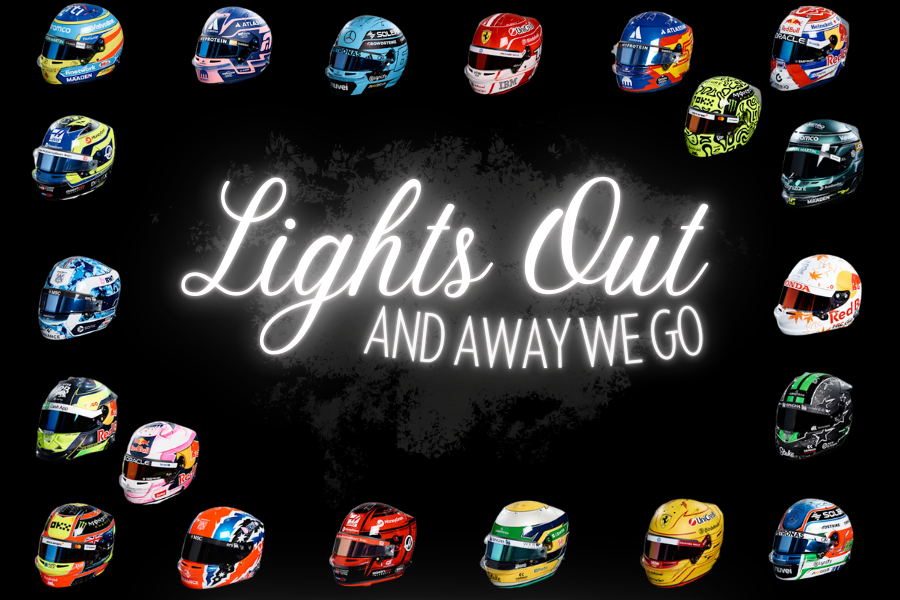For the past few years now the 2012 doomsday phenomenon has swept the world and gripped people’s imagination like a vice. So many have raised theories, ranging from the scientific to the spiritual, all proposing end-day scenarios ranging from pure catastrophism and annihilationism to New Age cyclicism, with each idea finding some traction with at least a small group of people in the world. But just what is to be said about these doomsday theories? Is all of this just simple pop culture gone awry, or is there some veracity in what’s being said? With 2011 having finally come to a close, these questions are piquing more and more at the backs of almost everyone’s minds.
First, in order to better understand the topic, a quick lesson in New World culture and mythology is in order. The entirety of the world’s favorite doomsday theories have centered on the winter solstice of this year: December 21, 2012. This date is connected heavily with the long-count calendar of the Maya tribes of Native Americans. The Maya were a culture which used to reside in Mesoamerica; today, after the conquests of the Europeans and the introduction of Christianity into Mexico during the Columbian Exchange, much of what once made up the Mayan empire has been destroyed and buried under Eurocentric culture and the works of well-meaning pastors and reverends. However, of the few fragments of Mayan culture, what does survive is the long-count calendar. The Maya were phenomenal astronomers, which gave them the ability to accurately tell time, so to speak. The calendar begins on a date which would correspond to August 11, 3114 BCE on the Gregorian calendar today, and this particular day was so significant to the Maya because, according to post-Conquest texts such as the Popol Vuh, this was the day on which the gods first created the world. Since this day in the fourth millennium before the common era, there have been a grand total of three “creations” and two “apocalypses.” Unlike people of today, the Maya thought of time as cyclical, not linear, and thus they saw history as one round after another of construction, destruction and then reconstruction — the world has seen three constructions, and two destructions, with the third scheduled for December 21, 2012. With this in mind, like so very many world cultures, the end is not actually an end, but a new beginning.
However, oddly enough, despite the fact that the Maya were a rather different culture compared to the Eurocentric world today, with a very alien mythology, this has stopped few from adopting the doomsday as their own apocalyptic date. The adoption is really more of a crime of convenience than anything; the winter solstice of 2012 is so close one can almost touch it, which means that such a close end-day can be marketed far more energetically than an apocalypse to come a hundred or more years from now.
As mentioned above, the various conceptions of the 2012 doomsday have been rather colorful: today, there are several scenarios, ones as relatively rational as the planet impacting with some sort of celestial object, and others so bizarre even Ralph Waldo Emerson would be hard-pressed to decode them.
What seems to be most popular, however, is a sort of “death from above” end. Several have theorized that an asteroid impact could fit the bill, which is a highly probable end for Earth on any day of the year, really. Between Mars and Jupiter are belts of massive asteroids, some of which may have spawned the killers of the dinosaurs themselves. All that is necessary for an impact between the Earth and one of these mountain-sized rocks is a game of planetary orbits; should Jupiter or Mars shift in relation to each other in some unordinary way, thus manipulating the unique balance of this asteroid belt, a few rogue rocks could conceivably be thrown in the Earth’s direction, left for this pale blue dot’s own gravity-well to turn the world into a catcher’s mitt.
Colliding with a black hole may be a little more difficult to spin. The fact is that black holes are bad neighbors in the universe right from their births; a black hole is often formed from a violent supernova gone wrong, when a massive dying star cannot stand up against its own gravity and eventually collapses into an object of incalculable density and unknown construction. The initial supernova, however, is the real slap to the face when it comes to nearby stars; any object within a 25 light year radius will feel the effects of the solar blast. Unfortunately for most advocates of a black hole colliding with the Earth, the nearest star to our own that may go supernova is about 600 light years away, pretty far out of town, and even if such a star were to collapse into a black hole the orbit of the stars around the galactic center is so cyclical it would be rather inconceivable for a singularity to take a several hundred light year leap from its local space to our own just to pay our planet a visit. A more likely scenario is a micro-singularity, essentially the iPod Nano version of black holes, colliding with our sun and soaking up all the energy of the star, leaving this planet without a vital fuel source for heat, plant production, and so on.
One last collision theory revolves around the Babylonian and Sumerian Nibiru. There once was a man named Zecharia Sitchin, who, like every average Joe, believed the world had been visited repeatedly throughout history by aliens. In this vein, Sitchin interpreted several ancient Babylonian and Sumerian texts about a god named Nibiru, represented as a star or celestial object in the sky (a common Near Eastern image for gods and souls), as documenting a collision between the Earth and a planet named after this same god. Sitchin and advocates of his theory postulate that the poems in question speak from experience, documenting an ancient historical event when this planet Nibiru nearly collided with the Earth and essentially left the inhabitants shaken up, with a subsequent “second-run” to occur in 2012, when Nibiru will actually collide with our planet. Unfortunately for Mr. Sitchin, his theory is invalid for two reasons: firstly, there are no other cultures in the world to collaborate the story (when an entire planet nearly hits your own you can bet the whole block will be abuzz with gossip); and secondly, if such a catastrophe were to occur then ironically there would more than likely be no one left to recount the day’s events.
While the majority of the 2012 theories are wildly unprecedented, some teetering on the brinks of insanity and foolishness, many have nonetheless been caught up in the whimsy of it all. Oddly enough, humanity seems to hold a rather morbid fascination with its own end, and the more gruesome the better. For the rest of us, however, 2012 is just another Y2K, and all that can really be done when it comes to people who refuse to listen to reason is to wait for the shoe to drop — come December 21, 2012, anticipate high frequencies of ridiculous behavior; come midnight of December 22, please don’t laugh too loudly at your friends.



![Jumping off the ground, senior linebacker Bennett Patton snatches the ball out of the air for an interception at Thursday’s game against Chaparral. Patton had two interceptions in the 56-14 victory, tying the school record for interceptions in a game. “I was just playing the game,” Patton said. “[I’m] going to go into next week, forget about it and stay humble.” Photo by Harper Chapman](https://cphswolfpack.com/wp-content/uploads/2025/09/bennett-interception.jpg)
![The fire department came to the school after students were evacuated when smoke started coming from the ceiling of a classroom. All students and staff are safe. “All of my friends left their stuff too, so we couldn’t contact our parents, and it was stressful,” senior Brynn Fowler said. “It was scary because I didn’t know [what was going on], and I couldn’t find anyone because it was a big crowd.” Photo by Anthony Garcia](https://cphswolfpack.com/wp-content/uploads/2025/09/firetruck.jpg)


![Sitting with her friend senior Sohpia Struve at last year’s Austin City Limits Festival, senior Ava Zuniga poses for a picture under a pavilion. They are frequent attendees at ACL, an annual music festival at Zilker Park. “I would recommend seeing a bunch of people,” Zuniga said. “This past year, we camped out for Chappell [Roan] for a really long time. I think the whole point of ACL, [which] is a lot of fun, is that you can go see so many different people, even if you don’t know them. So by camping by one person, it really limits yourself from being able to go see a bunch of people.” Photo courtesy of Ava Zuniga](https://cphswolfpack.com/wp-content/uploads/2025/10/EE9E9484-FE6F-4AA0-B5F5-0C177AB32841-1200x857.jpeg)
![Broadcast, yearbook and newspaper combined for 66 Interscholastic League Press Conference awards this year. Yearbook won 43, newspaper won 14 and broadcast took home nine. “I think [the ILPC awards] are a great way to give the kids some acknowledgement for all of their hard work,” newspaper and yearbook adviser Paige Hert said. “They typically spend the year covering everyone else’s big moments, so it’s really cool for them to be celebrated so many times and in so many different ways.”](https://cphswolfpack.com/wp-content/uploads/2025/05/edited-ILPC.jpg)




![Looking down at his racket, junior Hasun Nguyen hits the green tennis ball. Hasun has played tennis since he was 9 years old, and he is on the varsity team. "I feel like it’s not really appreciated in America as much, but [tennis] is a really competitive and mentally challenging sport,” Nguyen said. “I’m really level-headed and can keep my cool during a match, and that helps me play a bit better under pressure.” Photo by Kyra Cox](https://cphswolfpack.com/wp-content/uploads/2025/09/hasun.jpg)


![Bringing her arm over her head and taking a quick breath, junior Lauren Lucas swims the final laps of the 500 freestyle at the regionals swimming competition on date. Lucas broke the school’s 18-year-old record for the 500 freestyle at regionals and again at state with a time of 4:58.63. “I’d had my eye on that 500 record since my freshman year, so I was really excited to see if I could get it at regionals or districts,” Lucas said. “ State is always a really fun experience and medaling for the first time was really great. It was a very very tight race, [so] I was a bit surprised [that I medaled]. [There were] a lot of fast girls at the meet in general, [and] it was like a dogfight back and forth, back and forth.” Photo by Kaydence Wilkinson](https://cphswolfpack.com/wp-content/uploads/2025/03/Kaydence-2.7-23-edit-2.jpg)
![As the support team sits and poses for a photo in the cafeteria with the counseling team they eagerly wait to start their day. "We [all] seem to be a team, I get up every day and there's days where I don't want to go to work today, but I'm thankful that I have a job and I'm blessed to have what I have," Christopherson said. Photo Courtesy of Julie Weltens.](https://cphswolfpack.com/wp-content/uploads/2025/01/AF9E8470-10D7-4C91-BF28-EC8F86BAB66C-1200x852.jpeg)
![Officer Stephanie Cash is in her second year as an SRO at CPHS. “Seeing [students] grow over the years has been kind of cool,” Officer Cash said. “Freshmen that [are] all over the place and then in the next couple of years get a little more squared away and go to class and do work and start thinking about the future. Being a part of a student's growth is the best way to measure my success as an SRO.” Photo Courtesy of Cedar Park Police Department's PIO, Alicia Gallagher.](https://cphswolfpack.com/wp-content/uploads/2024/12/CPHS-SRO-900x1200.jpg)
![As he sprints with the ball, senior running back Trae Hill breaks a tackle during Friday’s 35-14 loss against the Vandegrift Vipers. Hill ran for 135 yards and two touchdowns during the game. “[Scoring] was electric,” Hill said. “It always feels good to score, but the O-line did everything.”](https://cphswolfpack.com/wp-content/uploads/2025/09/IMG_0795allie.varfb_-1200x799.jpg)














